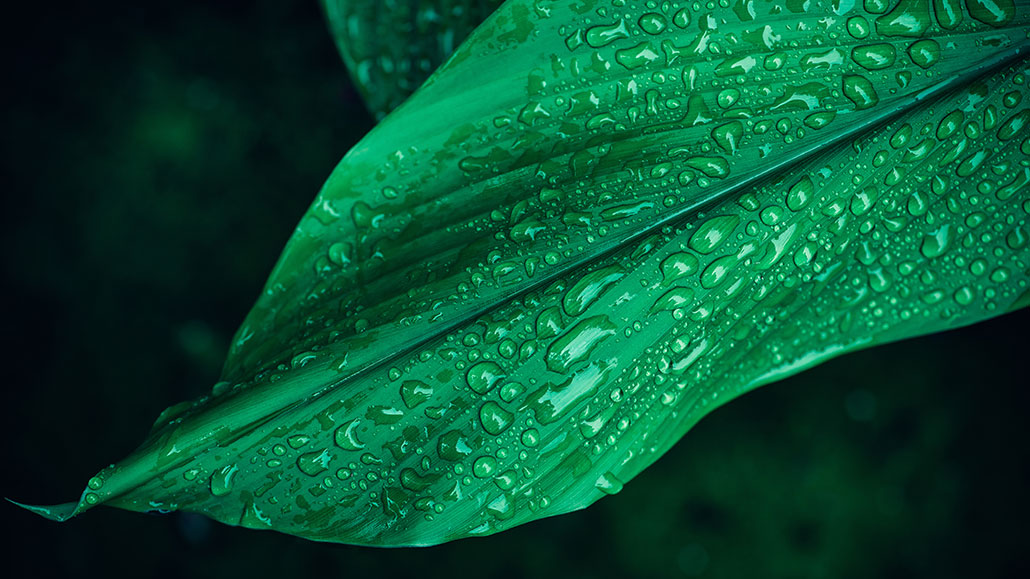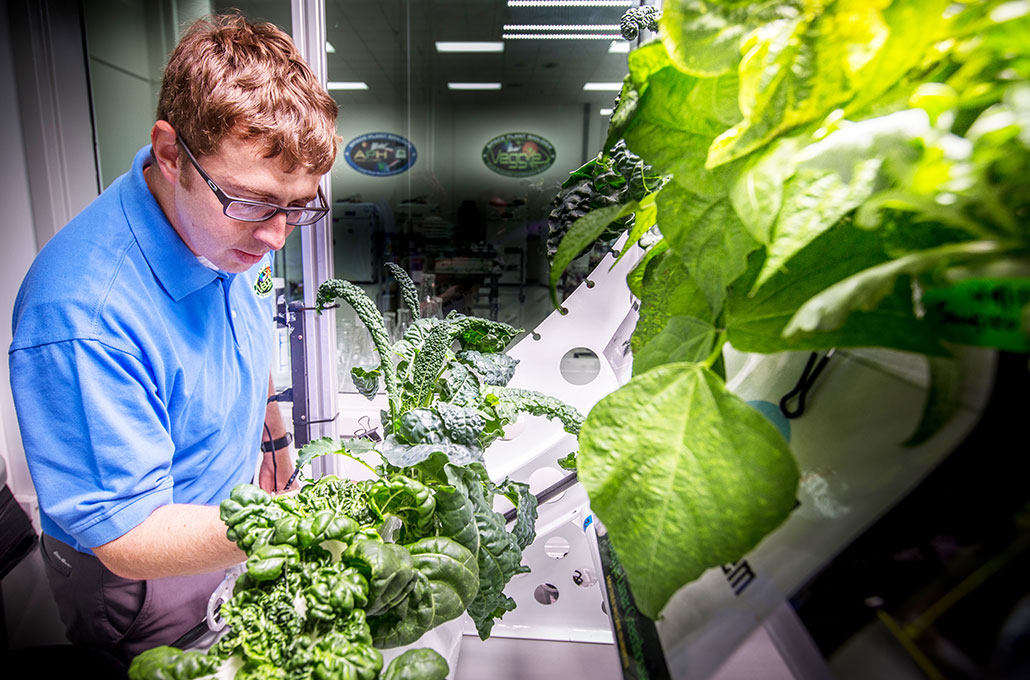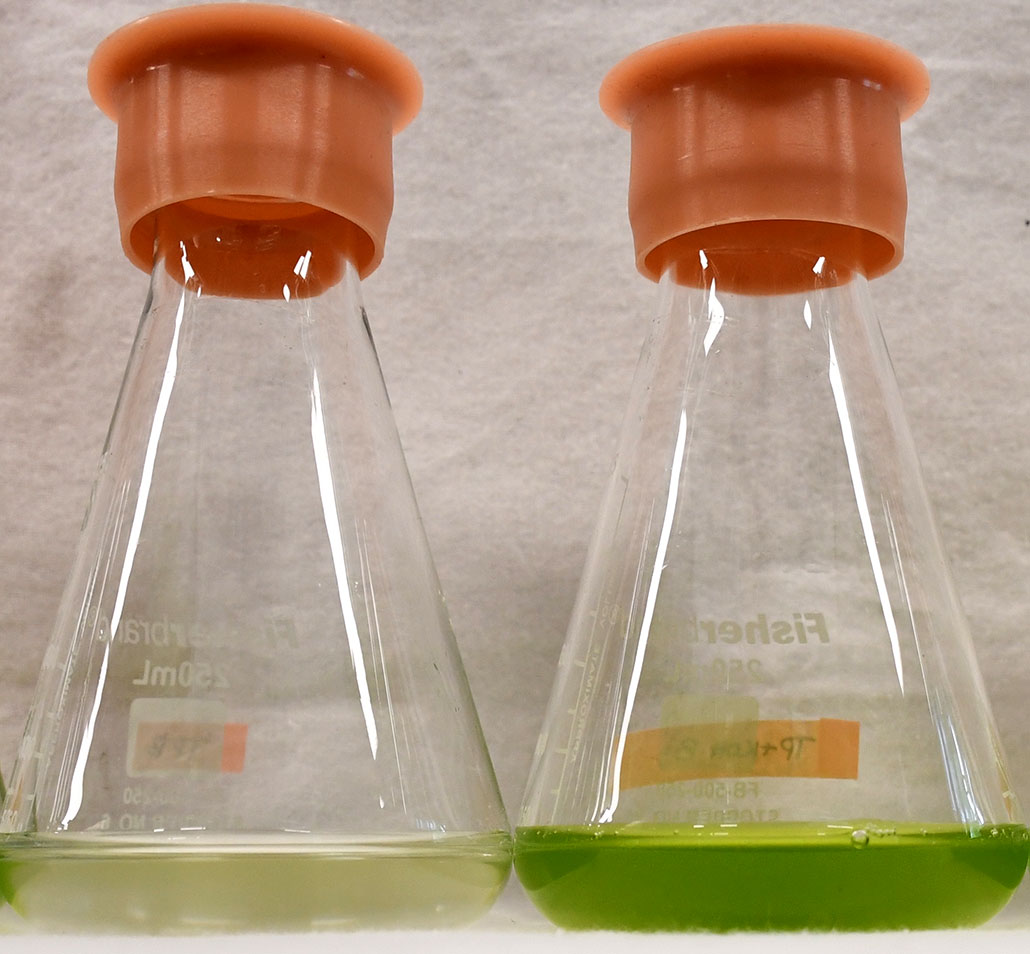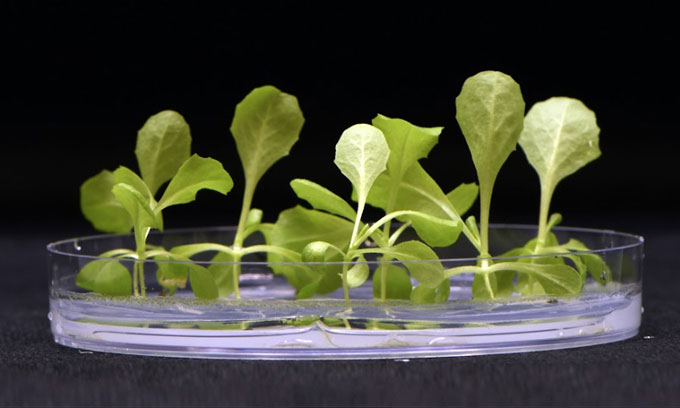No sun? No prob! A new process might soon grow plants in the dark
Electricity, not light, may one day power their growth — a special boon for space missions

Leaves normally make a plant’s food through photosynthesis. That process requires sunlight. But new research is finding a new electricity-driven substitute for photosynthesis. This new process holds out the prospect of one day growing crops in the dark.
KDP/Moment/Getty Images Plus
Share this:
- Share via email (Opens in new window) Email
- Click to share on Facebook (Opens in new window) Facebook
- Click to share on X (Opens in new window) X
- Click to share on Pinterest (Opens in new window) Pinterest
- Click to share on Reddit (Opens in new window) Reddit
- Share to Google Classroom (Opens in new window) Google Classroom
- Click to print (Opens in new window) Print
No sun? That may not be a problem for future space gardens. Scientists just came up with a hack for growing food in the dark.
So far, the new method works with algae, mushrooms and yeast. Early experiments with lettuce suggest that plants, too, might soon be able to grow using energy sources other than sunlight.
The light-free process takes in carbon dioxide, or CO2, and spits out plant food, just as photosynthesis does. But the plant food it makes is acetate (ASS-eh-tayt), rather than sugar. And unlike photosynthesis, this plant food can be made using plain old electricity. No sunlight needed.
This might not be crucial on Earth where there’s usually plenty of sunlight to grow plants. In space, however, that’s not always the case, explains Feng Jiao. He’s an electrochemist at the University of Delaware in Newark. That’s why he thinks deep-space exploration is likely the first big application for this. His team’s new process might even find use on the surface of Mars, he says. Even in space, he points out, astronauts will have access to electricity. For instance, he offers, “Maybe you’ll have a nuclear reactor” on board a spacecraft that makes it.
His team’s paper appears in the June 23 issue of Nature Food.
The researchers have focused on the issue of sunlight availability for plants. But that’s not the only problem this new tech could help solve, says Matthew Romeyn. He’s a NASA plant scientist at the Kennedy Space Center in Cape Canaveral, Fla. He wasn’t part of this study. He does, however, appreciate limits to growing food in space. His job is to help find better ways to grow plants in space. And, he says, too much CO2 is one problem space travelers will face.

With every breath they exhale, astronauts release this gas. It can build to unhealthful levels in spacecraft. Romeyn says, “Anyone that has a way to use CO2 efficiently, to do something actually useful with it — that’s pretty awesome.”
This new tech not only removes CO2, but also replaces it with oxygen and plant food. Astronauts can breathe the oxygen. And the plant food can help grow crops to eat. “It comes down to doing things in a sustainable way,” Romeyn says. That, he argues, is a huge benefit of this study.
An idea takes root
Jiao figured out how to make acetate from CO2 some time ago. (Acetate is what gives vinegar its sharp smell.) He developed a two-step process. First, he uses electricity to take an oxygen atom off of CO2 to make carbon monoxide (or CO). Then, he uses that CO to make the acetate (C2H3O2–). Extra tricks along the way boost the process.

Using acetate to replace photosynthesis never crossed his mind — until he chatted with some plant scientists. “I was giving a seminar,” Jiao recalls. “I said, ‘I have this very niche technology.'”
He described using electricity to turn CO2 into acetate. Suddenly, those plant scientists took a keen interest in his tech.
They knew something about acetate. Usually, plants won’t use food they don’t make themselves. But there are exceptions — and acetate is one of them, explains Elizabeth Hann. She’s a plant scientist at the University of California at Riverside. Algae are known to use acetate for food when there’s no sunlight around. Plants might, too.
As Jiao chatted with the plant scientists, an idea emerged. Could this CO2-to-acetate trick substitute for photosynthesis? If so, it might enable plants to grow in complete darkness.
The researchers teamed up to test the idea. First, they needed to know if organisms would use lab-made acetate. They fed acetate to algae and plants living in the dark. Without light, photosynthesis would be impossible. So any growth they saw would have to have been fueled by that acetate.

The algae grew well — four times more efficiently than when light fueled their growth through photosynthesis. These researchers also grew things on acetate that do not use photosynthesis, such as yeast and mushrooms.
Alas, Sujith Puthiyaveetil points out, “They didn’t grow plants in the dark.” A biochemist, he works at Purdue University in West Lafayette, Ind.
That’s true, notes Marcus Harland-Dunaway. He’s a member of the team at UC Riverside. Harland-Dunaway tried growing lettuce seedlings in the dark on a meal of acetate and sugar. These seedlings lived but didn’t grow. They didn’t get any bigger.
But that’s not the end of the story.
The team tagged their acetate with special atoms — certain isotopes of carbon. That allowed them to trace where in the plants those carbon atoms ended up. And acetate’s carbon turned up as part of plant cells. “The lettuce was taking up the acetate,” Harland-Dunaway concludes, “and building it into amino acids and sugars.” Amino acids are the building blocks of proteins and sugar is the plants’ fuel.
So plants can eat acetate, they just tend not to. So it may take some “tweaking” to get plants to use this photosynthesis workaround, Harland-Dunaway says.

A big deal?
Jiao’s two-step process to turn CO2 to CO to acetate is “some clever electrochemistry,” Puthiyaveetil says. This wasn’t the first report of using electricity to make acetate, he points out. But the two-step process is more efficient than prior ways. The end product is mostly acetate, rather than other possible carbon products.
Feeding that electricity-made acetate to organisms is also a new idea, notes chemist Matthew Kanan. He works at Stanford University in California.
Gioia Massa at the Kennedy Space Center sees potential in the approach. She’s a plant scientist in NASA’s Space Crop Production program. It studies ways to farm foods in space. Astronauts could easily raise algae, she says. But dining on algae would not likely make astronauts happy. Instead, Massa’s team aims to grow yummy things with lots of vitamins.
At NASA, she says, “We’re approached a lot … with different ideas [for growing crops].” This acetate work is in its early stages, she says. But the new findings suggest acetate’s potential for growing plants in space “is very good.”
On early missions to Mars, she says, “we’ll probably be bringing most of the food from Earth.” Later, she suspects, “we’ll end up with a hybrid system” — one that combines old farming approaches with new ones. An electric substitute for photosynthesis “may very well end up being one of the approaches.”
Kanan hopes this plant hack may help Earth-based growers as well. Using energy more efficiently in farming will become ever more essential in a world that could soon have “10 billion people and increasing [food] constraints. So, I love the concept.”
This is one in a series presenting news on technology and innovation, made possible with generous support from the Lemelson Foundation.







